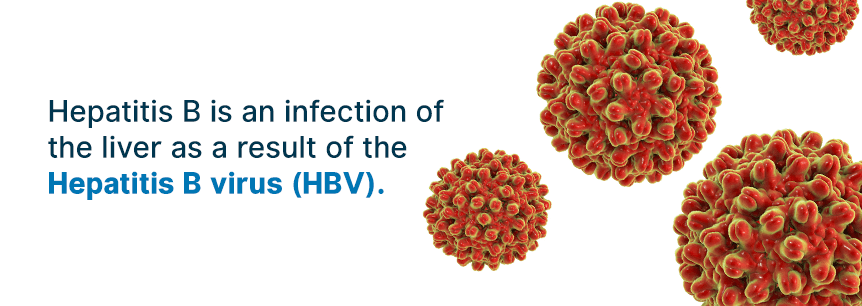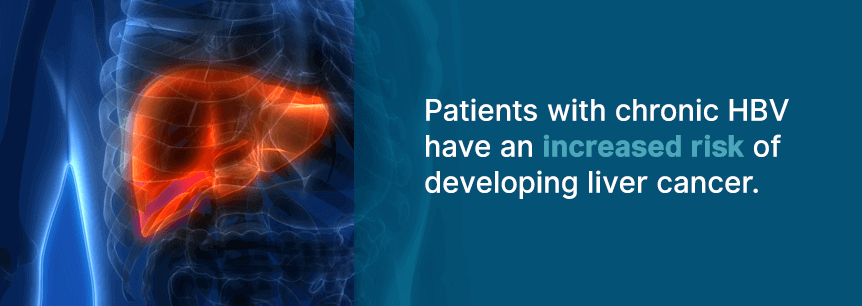
Hepatitis B is a liver infection caused by the Hepatitis B virus. According to the World Health Organization (WHO), approximately 257 million people live with the infection worldwide. While some cases of hepatitis B resolve themselves naturally, others develop into more serious conditions.
If you are interested in exploring alternative treatments for hepatitis B, medical marijuana may be the holistic and effective option you’ve been searching for. Before we go into the potential of cannabis for treating hepatitis B, let’s go into the details of hepatitis B — its different types, causes, symptoms and common methods of treatment.
According to recent research studies, medical marijuana shows great potential for treating hepatitis B. In one study, researchers revealed that cannabis enhanced fibrogenesis in patients with HBV, which promotes the healing and repair of wounds throughout body tissues. In another study, CBD slowed the process of viral hepatitis, further indicating that cannabinoids may help the ECS fight off the infection.

Because of the legal hurdles revolving around marijuana and studying its effects, research on the effect of cannabis on hepatitis B is new and still being conducted. What we know is encouraging — all indicators suggest that cannabis works directly against HBV.
Besides its effect on the HBV virus, medical cannabis has been shown to reduce many of HBV’s symptoms.
Find A Doctor Find A Dispensary
Cannabis is a known reliever of joint pain. Marijuana cannabinoids specifically target the inflammation around the joints, helping to provide long-lasting relief for patients suffering from this type of pain. Joint pain is a symptom of many conditions such as rheumatoid arthritis, lupus, osteoarthritis, tendinitis, and bursitis — in studies concerning all of these conditions, cannabis has successful reduced joint pain and inflammation.
A 2016 study revealed that CBD-based topical products relieved arthritis-related pain and inflammation. Another study conducted in 2017 showed that CBD is an effective and safe treatment for osteoarthritis joint pain, further illustrating its therapeutic and pain-relieving properties.
The best strains of marijuana to fight joint pain and inflammation include:
Severe nausea and vomiting are common symptoms of hepatitis B, but medical marijuana can help relieve these feelings. The endocannabinoid system helps regulates nausea — because they directly interact with the ECS, cannabinoids have been shown to help suppress sensations of nauseousness and vomiting.
In a 2011 study, CBD, in particular, was effective in treating nausea and vomiting in various animal studies, and oral cannabinoids have been shown to reduce chemotherapy-induced vomiting and nausea in cancer patients.
To treat feelings of nausea, try one of these strains of marijuana.
Cannabis is a holistic, natural treatment alternative to current treatments for hepatitis B. However, just like with any medication, marijuana comes with the risk of negative side effects.

Here are a few of the most commonly reported side effects of using weed:
Almost all of the side effects of cannabis can be reduced or even eliminated by taking some additional steps or precautions. But ultimately, marijuana affects each person differently. When you are looking for the right strain for your needs, work closely with a certified marijuana physician — they can supervise your search and help point you in the right direction.
When most people think about marijuana use, they instantly picture someone smoking a joint. However, this is an incomplete picture of consuming weed — marijuana products come in a broad range of styles and types, ranging from oils and sprays to delicious edibles.
Below are just a few of the most common and popular ways to use medical marijuana:
Just like marijuana strains, the best consumption method will depend on the way your body interacts with cannabis. Experiment with a few different methods to find which one works the best for you.

A hepatitis B diagnosis can be frightening and discouraging. If you are tired of the available treatments, medical marijuana could be the alternative solution you’ve been hoping for.
We’re here to help. At MarijuanaDoctors.com, we have collected extensive directories of both professional dispensaries and certified marijuana doctors, along with legal information regarding marijuana use in your state — if you’re interested in pursuing medical marijuana as a treatment option, you have all the resources you need to begin.
Let medical marijuana help you heal. Search for a qualified physician and dispensary today.
Find A Doctor Find A Dispensary
Hepatitis B is an infection of the liver as a result of the Hepatitis B virus (HBV).

HBV is transmitted through body fluids such as saliva, blood or semen — when the body fluid of someone with HBV enters the body of another person, they have a high risk of contracting the virus.
The HBV vaccine helps prevent hepatitis B, but if someone contracts the virus, there is no known cure for the condition.
Hepatitis B comes in two general forms — acute and chronic. While acute cases typically resolve in less than six months, chronic infections can last for a lifetime.
In acute hepatitis B infections, the virus runs its course in less than six months. For most people, the immune system gradually clears out HBV without much help, and the majority of patients see a full recovery in just a few months.
When hepatitis B is contracted as an adult, most cases are acute — approximately 95 percent of adults exposed to HBV experience the acute form. However, these will sometimes develop into chronic hepatitis B.
Chronic HBV lasts longer than six months, and in some cases, it can become a lifelong condition. This type of hepatitis B stays in the body because the immune system is unable to successfully fight it off. In serious cases, chronic HBV can lead to a range of other, more serious conditions, such as liver cancer and cirrhosis.
The type of HBV someone develops is closely related to age — an estimated 90 percent of HBV-infected children develop chronic hepatitis B. Alternately, only two to six percent of infected adults develop the more serious type of infection.
Hepatitis B is passed on through contact with bodily fluids. Below are the four most common ways that HBV is spread.
Hepatitis B can’t be spread through coughing or sneezing — the infected fluid must enter the body for someone to contract the virus.
Hepatitis B comes with an array of negative and frustrating symptoms. Some of the most common effects of the infection include the following:
Typically, symptoms begin to appear around three months after contracting the virus. For acute HBV, symptoms can last anywhere from six weeks to six months. However, for chronic HBV, symptoms can linger for years without resolution.
Chronic hepatitis B can lead to a range of more serious health issues. Some of the most common complications include the following:

Not every case of HBV develops into these more serious conditions. However, it’s important to work with your doctor to monitor your symptoms and catch any complications early-on.
The best way to prevent the contraction and spread of HBV is to get vaccinated. However, for those who have not had the vaccination and contract the disease, the method of treatment depends on the type of HBV.
In patients with acute HBV, the immune system will gradually eradicate the virus without the aid of medication. Physicians most often recommend drinking lots of fluids, plenty of bed rest, avoiding alcohol and eating a healthy and nutritious diet. Although most patients recover easily, it is still important to regularly visit a doctor while you have acute HBV — they can help monitor your symptoms and can make sure the virus has fully left your system.
For patients with chronic HBV, treatment is more involved. Chronic HBV patients are monitored closely by a doctor to check for any signs of liver disease, which is a common complication of the virus. Several medications have been approved to treat chronic forms of HBV, including Viread, Vemlidy, Baraclude, Hepsera, and Heptodin.
However, these medications come with a long list of negative side effects. Some of the most typical include nausea, vomiting, skin rash, temporary hair loss, fatigue, diarrhea, and depression.
Before we go into the specific ways that cannabis treats hepatitis B, let’s explore how marijuana works in our bodies.
When marijuana enters the body, it interacts with the endocannabinoid system (ECS). ECS is a natural system in the body, and researchers first discovered it through studying marijuana. Despite its relatively recent discovery, the ECS plays an integral role in the body, helping to maintain a state of homeostasis. The ECS assists with a variety of essential functions, including regulating appetite, metabolism, memory, intercellular communication, and the immune response.
Throughout the body, the endocannabinoid system has two distinct types of receptors, CB1 and CB2. CB1 receptors are primarily found in the spinal cord and the brain, but they also have been found in various organs, glands, and connective tissues. Alternately, CB2 receptors are clustered throughout the immune system and peripheral nervous system. When marijuana enters the bloodstream, its compounds bind to one of the two ECS receptors. Which one depends on the strain of marijuana’s specific cannabinoids.
Cannabinoids are the chemical compounds within marijuana. Although 85 distinct cannabinoids have so far been discovered within cannabis, the two primary cannabinoids are cannabidiol (CBD) and tetrahydrocannabinol (THC). Once in the body, CBD binds to CB2 receptors and THC targets CB1 receptors. Consequently, THC is the cannabinoid that is associated with the psychoactive effects of weed because it interacts with the ECS receptors in the brain and nervous system. Because CBD binds to the CB2 receptors, it doesn’t create the “high” associated with marijuana. Instead, it gives all the therapeutic effects of cannabis without the psychoactive ones.
For many conditions, CBD is more helpful at healing than THC, which has made it a popular choice in medical marijuana strains. When deciding what strain of marijuana to use for your specific needs and medical condition, research the ratios of cannabinoids within each type.
The most common types of marijuana strains are Sativa and Indica — while Indica strains are high with CBD cannabinoids, Sativa strains have high levels of THC.